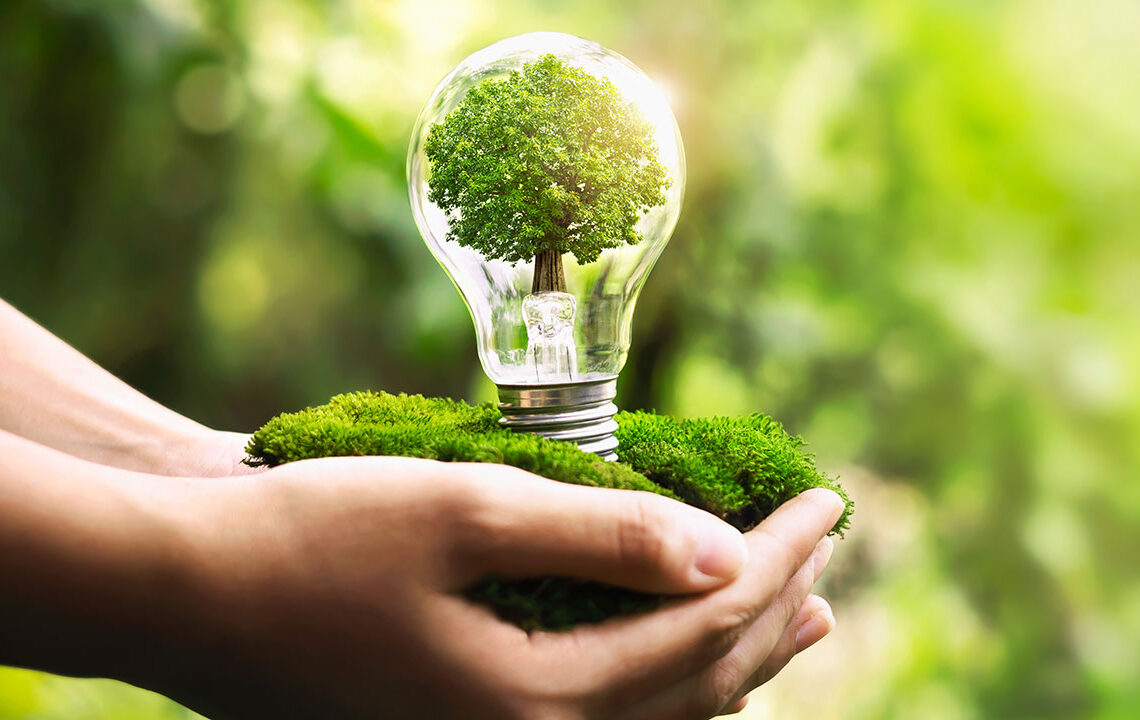The Butterfly Effect: How Minor Changes Yield Major Environmental Benefits
It’s easy to feel dwarfed by the scale of environmental challenges, but significant change often begins with small, consistent actions. Understanding how our daily decisions impact the environment empowers us to make a difference.
The Power of Individual Actions
Seemingly insignificant actions, when multiplied across a population, can lead to substantial environmental improvements. Reducing our reliance on single-use plastics and being mindful of water consumption at home are prime examples of how individual efforts accumulate.
Cultivating Sustainable Consumption Habits
The shift away from fast fashion exemplifies this principle. This change in consumer behavior is beginning to alleviate the strain on resources and decrease waste in the textile industry. Choosing quality over quantity can have a surprisingly positive impact.
Maximizing Home Energy Efficiency
Adopting energy-saving habits, such as using LED bulbs or installing smart thermostats, is another way to contribute. These small changes in our homes gradually help lower household carbon footprints.
Amplifying Impact Through Collective Awareness
Experts emphasize that while systemic change is essential for long-term sustainability, these “small choices,” when practiced widely, can significantly reduce emissions and resource consumption. The growing public awareness and willingness to embrace these changes are encouraging.
Decoding Green Claims: Identifying Authentic Eco-Friendly Practices
Navigating the world of sustainable living can be complex. With numerous products claiming to be “green,” it’s easy to fall prey to misleading marketing. Let’s explore how to identify genuine eco-friendly practices and avoid “greenwashing.”
Recognizing Greenwashing Tactics
Greenwashing involves deceptive marketing to portray a product or company as environmentally friendly when it’s not. This can include vague language, hidden trade-offs, or outright false claims. Recognizing these tactics is the first step in making informed choices.
The Prevalence of Greenwashing
In the U.S., greenwashing remains a significant concern. There has been an increase in the number of companies potentially engaging in greenwashing practices. It’s important for those pursuing sustainable living to scrutinize environmental claims carefully. The table below shows the status of greenwashing in the United States and Europe:
| Category | United States (2024) | Europe (2024) |
| Companies at risk of greenwashing | Slight increase (~6%) | 918 companies (-19%) |
| Executives admitting to greenwashing | 68% | Not specified |
| Consumers believing in greenwashing | 52% (up from 33% in 2023) | Not specified |
| Change in total greenwashing cases | +6% | -19% |
Data source: Woola Blog “50+ Greenwashing statistics to detect fake sustainability claims”
The data indicates that greenwashing is still a relevant issue in the U.S., with a notable percentage of consumers believing in these deceptive practices. While Europe has seen a decrease in companies at risk of greenwashing, the U.S. shows an increase, highlighting the need for vigilance in evaluating environmental claims.
Identifying False Claims
Look for environmental claims that are specific, measurable, and verifiable. Vague terms like “eco-friendly” or “natural” without further explanation should raise suspicion. Also, be wary of claims that emphasize one eco-friendly aspect while ignoring other negative environmental impacts.
The Value of Certifications
Third-party certifications can provide assurance that a product meets specific environmental standards. Seek out well-known and reputable certifications, as these often involve independent audits and verification processes, adding credibility to environmental claims.
From Waste to Resource: The Fundamentals of Composting
Want to enrich your garden while minimizing waste? Composting is a fantastic way to recycle kitchen scraps and yard waste into nutrient-rich soil for your plants. Let’s explore the basics of composting and how you can get started.
The Benefits of Composting
Composting is nature’s recycling process, transforming organic waste into a valuable soil amendment. This enriches the soil, reduces the need for chemical fertilizers, and helps retain moisture. Additionally, it diverts waste from landfills, reducing methane emissions, a potent greenhouse gas.
What to Compost
A good compost mix includes “greens” (nitrogen-rich materials) and “browns” (carbon-rich materials). Greens include kitchen scraps like fruit and vegetable peels, coffee grounds, and grass clippings. Browns include dry leaves, twigs, cardboard, and paper. Avoid composting meat, dairy, oily foods, and diseased plants.
The Composting Process Explained
Composting requires a balance of air, water, and organic matter. Layer greens and browns in a compost bin or pile. Keep the pile moist, like a wrung-out sponge. Turn the pile regularly to aerate it. Over time, the materials will decompose into dark, crumbly compost.
Beyond Disposables: Embracing Reusable Products for a Sustainable Future
With increasing awareness of our environmental footprint, the shift towards sustainable living is gaining momentum. One notable change is the growing popularity of reusable products, transforming how we consume and discard everyday items.
The Appeal of Reusables
Consumers are actively seeking alternatives to single-use items, driving a surge in demand for reusable products. This reflects a broader understanding of the impact of waste and a desire to minimize environmental harm through conscious purchasing choices.
Market Trends in Reusable Products
The reusable water bottle market exemplifies this trend, experiencing growth across various material types. Plastic and metal bottles lead in market value, indicating strong consumer preference and market penetration. The following data illustrates this point:
| Material Type | Market Value (USD Billion) 2015 | 2020 | 2022 | 2023 | 2025 (Forecast) |
| Plastic | 0.40 | 0.46 | 0.47 | 0.50 | 0.53 |
| Metal | 0.30 | 0.34 | 0.38 | 0.40 | 0.41 |
| Glass | 0.26 | 0.34 | 0.35 | 0.35 | 0.38 |
| Silicone | 0.11 | 0.12 | 0.15 | 0.15 | 0.16 |
Data Source: Statista (as reported by Market.us News, “Reusable Water Bottles Statistics and Facts (2025)”) August 2024
The data reveals a steady increase in the market value of reusable water bottles across different materials, underscoring the growing consumer interest in sustainable alternatives.
Factors Driving the Trend
Increased consumer awareness of plastic pollution plays a significant role, alongside regulatory measures targeting single-use plastics. The promotion of circular economy principles further encourages the adoption of reusable alternatives.
Innovation and Accessibility
Companies are responding to this demand by innovating in material types and distribution channels, making reusable options more accessible and appealing to consumers, which reinforces the trend.
Reshaping Manufacturing and Retail
Individual purchasing decisions, when multiplied across a large population, are reshaping manufacturing and retail priorities. This drives investments in sustainability, highlighting the power of everyday choices in achieving broader environmental goals.
Minimizing Waste: Reducing Food Waste for a Sustainable Tomorrow
Food waste poses a significant challenge to environmental sustainability, but practical steps can make a real difference. By minimizing the amount of food we discard, we can lessen our environmental footprint and promote a healthier planet for future generations.
The Environmental Impact of Food Waste
Food waste contributes substantially to greenhouse gas emissions and landfill overflow. A considerable percentage of all food goes uneaten, leading to economic losses and environmental strain. Reducing this waste is crucial for mitigating climate change and conserving valuable resources.
Practical Strategies for Reducing Food Waste
Simple changes in our daily routines can significantly decrease food waste. Planning meals, proper food storage, and creative use of leftovers are effective strategies. Embracing these habits not only saves money but also reduces our environmental impact.
The Importance of Community and Systemic Changes
Addressing food waste requires collective action. Supporting local initiatives, advocating for policy changes, and participating in community programs can amplify individual efforts. These changes create a more sustainable food system for everyone.
Q&A
Question 1: What are some examples of small, individual actions that can collectively contribute to significant environmental improvements, as discussed in the article?
Answer: The article highlights several examples, including reducing reliance on disposable plastics, being mindful of water consumption, shifting away from fast fashion, and adopting energy-saving habits at home like using LED bulbs or smart thermostats. These seemingly insignificant actions, when adopted by many, create a substantial positive environmental impact.
Question 2: How prevalent is greenwashing in the U.S., and what are some tactics used to mislead consumers?
Answer: Greenwashing is a significant issue in the U.S., with a slight increase in companies potentially engaging in such practices in 2024 (6% increase). Tactics include vague language (“eco-friendly,” “natural”), hidden trade-offs, and outright false claims. A concerning 52% of consumers believe greenwashing claims, up from 33% in 2023. Scrutinizing claims for specific, measurable, and verifiable information is crucial.
Question 3: What are the key components of successful composting, and what are the significant environmental benefits?
Answer: Successful composting involves balancing “greens” (nitrogen-rich) and “browns” (carbon-rich) materials, maintaining moisture, and regularly turning the pile for aeration. Benefits include enriching soil, reducing the need for chemical fertilizers, diverting waste from landfills (reducing methane emissions), and providing valuable nutrients (Nitrogen, Phosphorus, Potassium). In 2023, millions of tons of organic feedstocks were processed, generating significant amounts of compost.
Question 4: How is the market for reusable products evolving, and what factors are driving this trend?
Answer: The market for reusable products is experiencing significant growth, driven by increased consumer awareness of plastic pollution, regulatory measures targeting single-use plastics, and the promotion of circular economy principles. The reusable water bottle market, with plastic and metal bottles leading in market value, exemplifies this trend. Innovation in materials and distribution channels is also making reusable options more accessible and appealing.
Question 5: What is the current state of the electric vehicle (EV) market in the U.S., and what factors are influencing its growth?
Answer: The EV market is experiencing a surge in sales, with nearly 300,000 EVs sold in Q1 2025, an 11% year-over-year increase. While growth varies among brands, some manufacturers have seen substantial gains. Factors driving adoption include consumer prioritization of environmental benefits and long-term cost savings, despite concerns about cost, range, and charging infrastructure. Government policy decisions will also significantly influence future growth.







